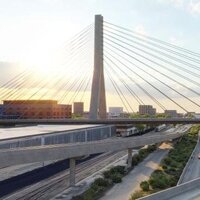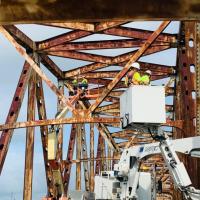The project marks Washington’s first use of the lightweight forms, though they have been already been used in the north-eastern United States.
The existing Loutsis Creek culvert under SR 203 blocks fish from traveling upstream because the water flow is too swift during spawning season.
“Often building a bridge requires bringing in a large crane to place concrete girders, but these carbon-fibre forms are light enough that people can handle them,” said Shawn Wendt, WSDOT’s engineer for the project.
By using the carbon-fibre forms, crews expect to shave several weeks off the work.
The carbon-fibre forms are hollow arched tubes with an opening to pump concrete. They also have small holes to allow air to escape. Once the arches are in place, carbon-fibre panels are inserted between them and the concrete is poured inside. After it cures, crews will put fill over the top and repave the highway.




